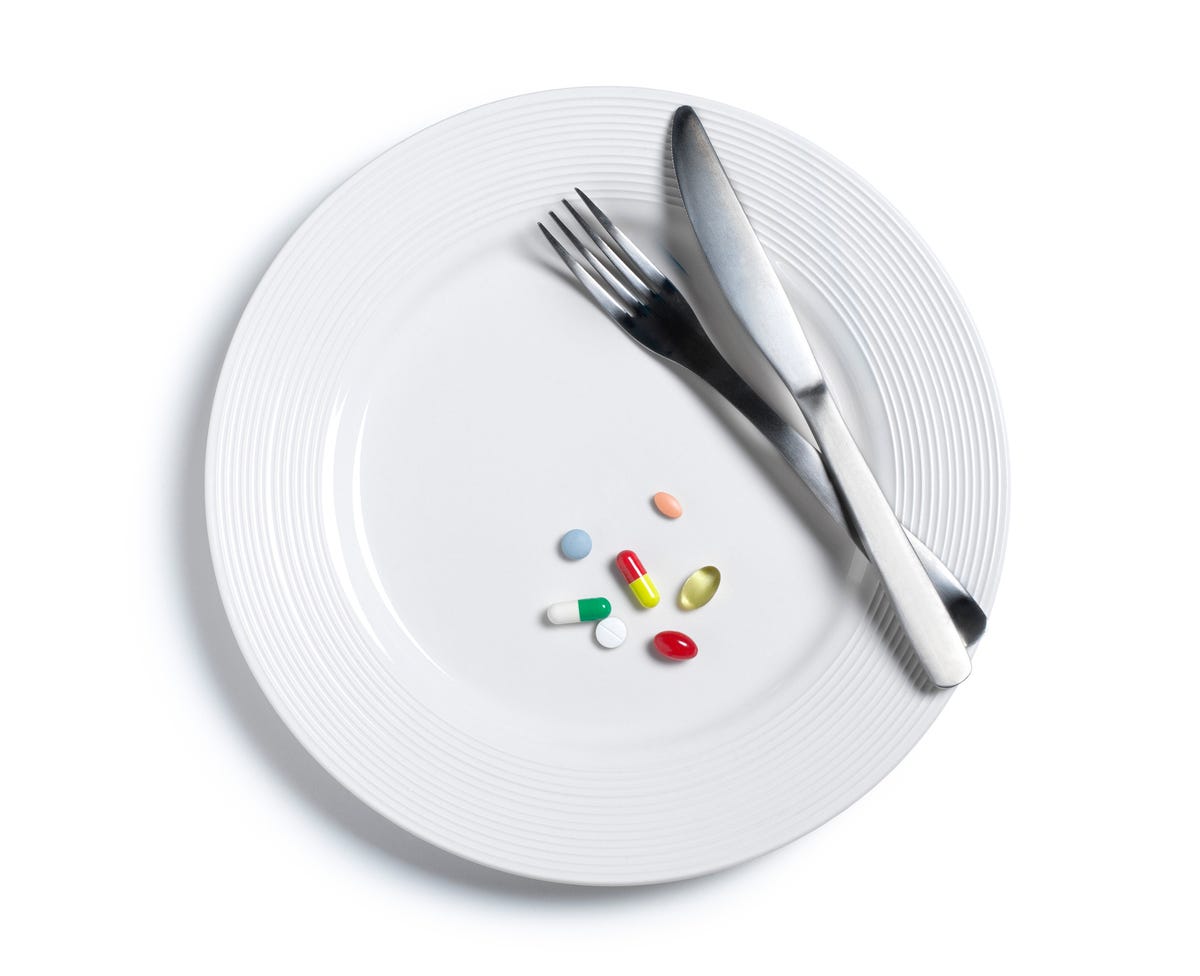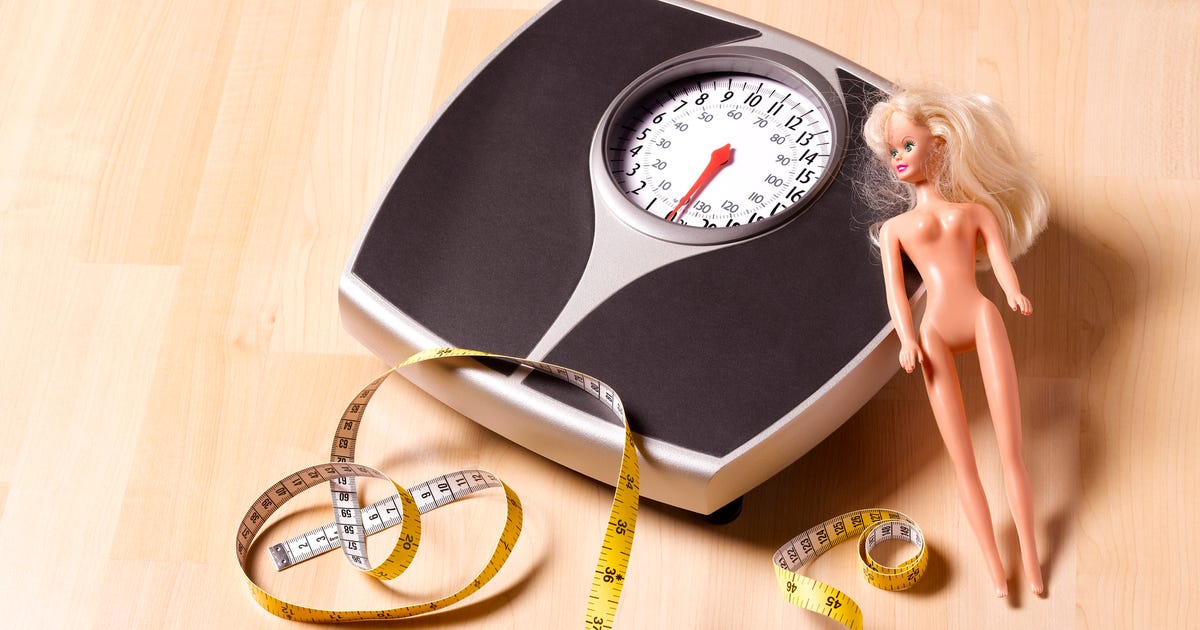Beauty standards are like the seasons: Just when you’ve gotten used to one, an invisible force from above sweeps it away and ushers in the next. But for generations, a common thread has run through almost every mainstream beauty trend in the US: fatphobia.
Fatphobia is the fear and hatred of body fat, also called weight stigma, sizeism or antifat bias. In the US, it’s such a constant force that it’s easy to forget that it’s even there. It’s present in almost every sphere of public life: waiting room chairs that only fit thinner people and clothing stores that only stock up to a certain size. We see it in harmful jokes about people with larger bodies on TV, in ad copy for gyms and diet programs and in unhelpful comments at the doctor’s office about how losing weight is the answer to any number of health concerns. Research shows that fat people (a reclaimed term) face harmful discrimination at work, in dating and in health care.
“In a medical environment, we know that weight stigma can have detrimental effects on patients,” says Dr. Katherine Hill, MD, pediatrician and vice president of Medical Affairs at Equip Health, an eating disorder treatment company.
Many people truly believe that by avoiding body fat at all costs, they’re doing what’s best for their overall wellness and quality of life. But trying to control the size and shape of our bodies is a slippery slope. While weight loss is widely promoted as healthy, the real story is much more complicated. Meanwhile, fatphobia itself has real, long-term consequences on both physical and mental health, and it’s just as pervasive as ever.
Here’s why fatphobia can be dangerous for your health, and how health practitioners, activists and scholars are working to combat it.
The hidden dangers of fatphobia

SeventyFour/Getty Images
Many people don’t see fatphobia as an issue, because our culture views fat as inherently unhealthy, and unhealthiness as inherently wrong.
The problem is that many commonly held beliefs about fat don’t hold up to closer examination. Much of obesity research, frequently cited as evidence of the health risks of a high body mass index, hasn’t taken the impact of weight stigma into account. The truth is that the link between weight and health isn’t straightforward enough to make thinness the goal for every human. Moreover, study after study finds that losing a significant amount of weight long-term is so unlikely as to feel impossible.
Fitness is what matters for long-term health, not weight, research increasingly shows. Yet fatphobia makes it harder for people who wear plus sizes to participate in exercise. Ironically, fatphobia doesn’t even achieve its purported goal — it helps drive the very weight gain that it demonizes.
Weight stigma has been linked to negative health effects in many studies, with some researchers positing that it’s worse for your health than any objective BMI. For example, in one study, viewing yourself as overweight was associated with unhealthy blood pressure, cholesterol and glucose levels, even in those who have “normal” BMIs. A 2015 study also found that people who reported experiencing weight discrimination had a 60% greater risk of dying regardless of their BMI.
Unlike some other forms of bias, fatphobia hasn’t decreased over the years — on the contrary, it has only intensified, according to a 2019 Harvard study on implicit and explicit bias. Fatphobia harms some people more than others, such as Black women, low-income people and those with the highest BMIs. However, it affects people of all sizes, ages, races and genders.

Peter Dazeley/Getty Images
Weight loss and disordered eating
Antifat bias prompts people to resort to a long list of methods to change their body composition, including workouts, compression garments, surgeries and drugs. Each of these methods has a dubious track record and comes with its own set of health risks.
Dieting is among the most popular, despite being largely ineffective. Because diets usually don’t work long-term, people tend to lose and then regain weight repeatedly. Known as “weight cycling,” this pattern increases your risk for conditions like cardiovascular disease.
Constant dieting can also be a gateway to bigger problems: “An emphasis on weight loss and dieting to reach certain BMI or weight ranges could trigger an unhealthy relationship with food or exercise, and even give way to an eating disorder,” says Dr. Hill.
Worldwide, at least 9% of people are affected by an eating disorder, the deadliest mental illness after opioid addiction, per the National Association of Anorexia Nervosa and Associated Disorders. People with average or high BMIs are particularly likely to have an eating disorder, contrary to popular belief: fewer than 6% of people with eating disorders are underweight.
Dieting can also trigger patterns that don’t quite reach the level of an eating disorder, but are nonetheless risky for your health: cutting out food groups, ruminating over food, or feeling a loss of control or enjoyment when it comes to eating.
“Behaviors like frequent dieting and preoccupation with food and weight are so normalized in our culture that those dealing with these attitudes and behaviors are often blind to their impact on health,” says Serena Benali, registered dietitian and founder of In Good Nutrition. Disordered eating can lead to “low self-esteem, anxiety, depressive symptoms and substance use,” Benali says, in addition to increasing your risk for an eating disorder down the line.

Peter Dazeley/Getty Images
Worse health care
Doctors are far from immune to antifat bias, studies show. On the contrary, weight stigma is pervasive in health care settings, leading patients with higher BMIs to receive substandard care: misdiagnoses, inadequate treatment and more, as outlets from the New York Times to Cosmopolitan have reported. Some doctors may even refuse to take on fat people as patients.
“Every physician I know is extremely well-intentioned and truly wants the best for their patients,” Dr. Hill says. “Yet due to lack of training and pervasive fatphobia in the medical field, many physicians might unintentionally be reinforcing weight stigma in their patient care. For instance, it’s common for a patient in a larger body to present with a concern unrelated to their body shape, like a sore throat, and the medical recommendation might be to ‘lose weight.'”
Some medical equipment is also inaccessible for people who aren’t thin — Dr. Hill pointed out issues with blood pressure cuffs and hospital gowns, for example. Understandably, all of this means fat people may be reluctant to seek care until it’s absolutely unavoidable.
Slim individuals may sometimes miss out on treatment for a different reason: the assumption that, by staying thin, they’re automatically staying healthy, too. Doctors may not screen for diabetes or heart disease in patients with normal BMIs, for example, despite the same BMI carrying different risks for different races, per Newsweek.
BMI is “flawed at best,” says Dr. Lillian Holloway, a former US Department of Justice physician who now works at the eating disorder treatment company Arise. “Even in the situations where the BMI has some merit, using it to open physician-patient conversations around healthy goals tends to alienate folks more rather than foster alignment with their physician or provider.”

Antonio_Diaz/Getty Images
Weight discrimination
Fat people experience discrimination in many forms beyond health care. They are less likely to be hired for jobs, and may receive lower pay when they are. There are no legal protections against weight discrimination in the vast majority of the US. Discrimination is a major contributor to stress, which in turn impacts health on all levels.
There’s also the problem of inaccessibility. Public seating often caters to thinner bodies, with narrow seats and armrests that can make it fraught for fat people to do tasks as simple as going to the movies or taking a flight. Plus-size clothing is much harder to find — the bigger the size, the fewer your options, and the more expensive, too. These examples are just the tip of the iceberg when it comes to the many ways that fatphobia creates injustice in daily life.
Psychological harm
Fatphobia can “have severe impacts on mental health,” Dr. Hill says. It causes issues with body image and self-esteem for people of all sizes, often leading to body dysmorphia. Up to 91% of women feel dissatisfied with their current body, research shows.
So-called obesity is often assumed to be the result of individual choices (despite genetics and environment playing a major role), which means that fat people also face a great deal of external shaming — even from those who should care about their health, like doctors, teachers or loved ones. Studies have linked weight stigma to a higher risk of mood and anxiety disorders, depression, substance use and suicidality.
In her book What We Don’t Talk About When We Talk About Fat, fat activist and author Aubrey Gordon writes about navigating exclusion and abuse on a daily basis, knowing that few bystanders will ever come to her aid. “Bodies like mine are seen by others as an open invitation to express disgust, fear and insidious concern,” she writes, adding later: “Wherever I go, the message is clear: my body is too much for this world to bear. And it’s reinforced by the people around me.”
Fighting fatphobia, on all fronts

FreshSplash/Getty Images
Fatphobia has strong players on its team: billion-dollar industries, government institutions, subconscious biases and the media we consume daily, to name a few.
But in the past decade, social media has allowed other voices to gain traction, giving rise to a multitude of movements fighting antifat bias from different angles: body positivity, body neutrality, fat acceptance, fat justice and others. In addition to plus-size models and performers like Tess Holliday and Lizzo, fat influencers in fashion, beauty, fitness, health and more are working to inspire and educate. Public figures of all sizes have also spoken out against sizeism and diet culture. Gordon co-hosts a podcast, Maintenance Phase, that regularly debunks myths about fatness while maintaining its spot as one of Apple’s most popular health podcasts.
Though still a minority in the field, many health practitioners and organizations are now devoted to fighting weight stigma in health care. Some individuals, like registered dietitian Michelle Allison or general practitioner Dr. Asher Larmie, are combating weight stigma in patient care and reclaiming fatness at the same time. Similarly, the Association for Size Diversity and Health “affirms a holistic definition of health,” most famously founding the popular Health at Every Size (HAES) set of principles, which include weight inclusivity and respectful care.
HAES is building a directory of aligned providers, which will be helpful for finding providers that are able to look beyond your weight at more important markers of health. A holistic approach can make all the difference for patient care. Dr. Hill says it “ensures we address [patients’] health issues strategically and specifically, rather than arbitrarily slapping them with a ‘you need to lose weight’ directive based solely on their body size.”
Beyond health, the National Association to Advance Fat Acceptance is working to secure size discrimination protections across the US, among other efforts for fat justice. NAAFA was founded in 1969 — proof that modern movements against fatphobia aren’t new, but instead are built on years of advocacy and scholarship. Researchers have been uncovering the consequences of weight stigma since the 1990s.
Perhaps the most important fight of all, though, is the fight to actually name fatphobia whenever it shows up — even (or especially) when that means confronting our own internalized biases. Antifat bias is deeply entrenched in our culture. Because it’s such an invisible, ever-present force, simply recognizing and naming it has great power: it turns it into a clear, identifiable opponent, which is the first step toward ultimately undoing it. Challenging fatphobia in ourselves as well as our peers, colleagues and loved ones is a crucial foundation of this work, but we can’t do that if we can’t even admit when it’s there.
Nearly three-quarters of Americans over age 20 meet the CDC’s current definition of “obesity” or “overweight.” Despite the many studies warning of the dangers of fatphobia and the misguidedness of judging health by body size, the so-called “war on obesity” continues as valiantly as ever, and fat people always seem to end up as its biggest targets. But even if all of the worst, most damning facts about fatness were true, that would be no justification for robbing such a large swath of the population of autonomy, safety, equity and dignity.
The information contained in this article is for educational and informational purposes only and is not intended as health or medical advice. Always consult a physician or other qualified health provider regarding any questions you may have about a medical condition or health objectives.

